- Developer: Compile Heart, Idea Factory
- Publisher: Idea Factory Intl, Reef Entertainment
- Genre: RPG, Action-adventure
- Platforms: Nintendo Switch, PlayStation 4, Windows PC
- Reviewed on: Windows PC, Switch
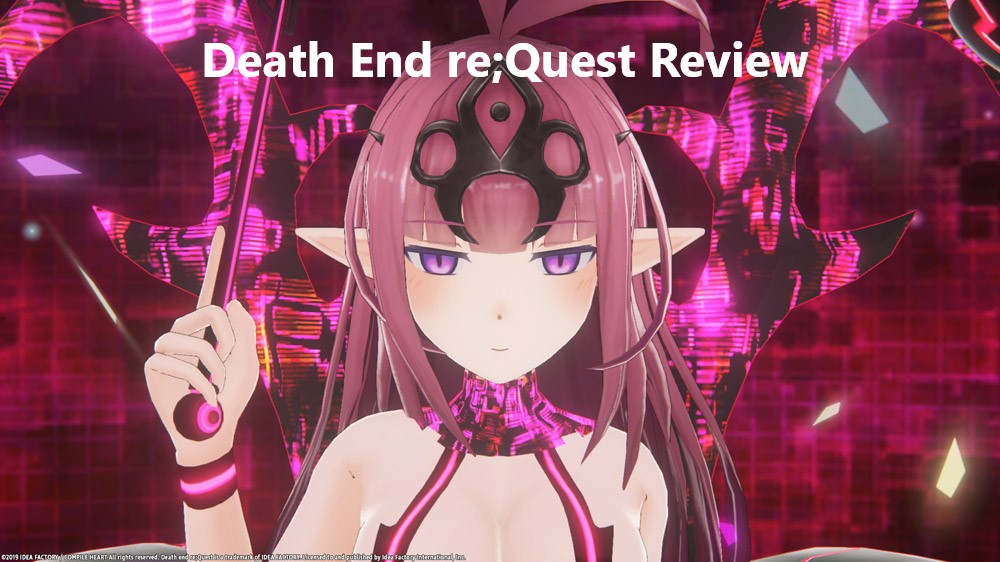
Death End re;Quest starts off dark with the traumatic death of one of the main characters, and it sets the tone for what the player should expect throughout the whole story.
In this game you have to play through Reality & Fantasy: In “Reality” you are playing as Arata Mizaunashi who was the Lead Programmer of the MMORPG “World’s Odyssey”; in the Fantasy world you play mainly as Shina Ninomiya, who also was a part of the Project MMORPG “World’s Odyssey” as the Game Director. The fantasy segments are where the bulk of the gameplay and exploring occurs, whereas the real world is more of a text-heavy adventure.
Shina has been missing for over a year. One of her friends, Arata, has been looking for her non-stop for the past year. Arata randomly gets a notification from a player “Shina Ninomiya” that somehow the game is still running after they shut it down. He scrambles to see what’s going on, only to find that it’s the missing Shina herself who has somehow got herself in the game and can’t log out. Just to fill every anime/JRPG trope, she also has amnesia to boot! Arata is tasked to try to help her reach the end of the game and get the force logoff option to save her. Sword Art Online anyone?
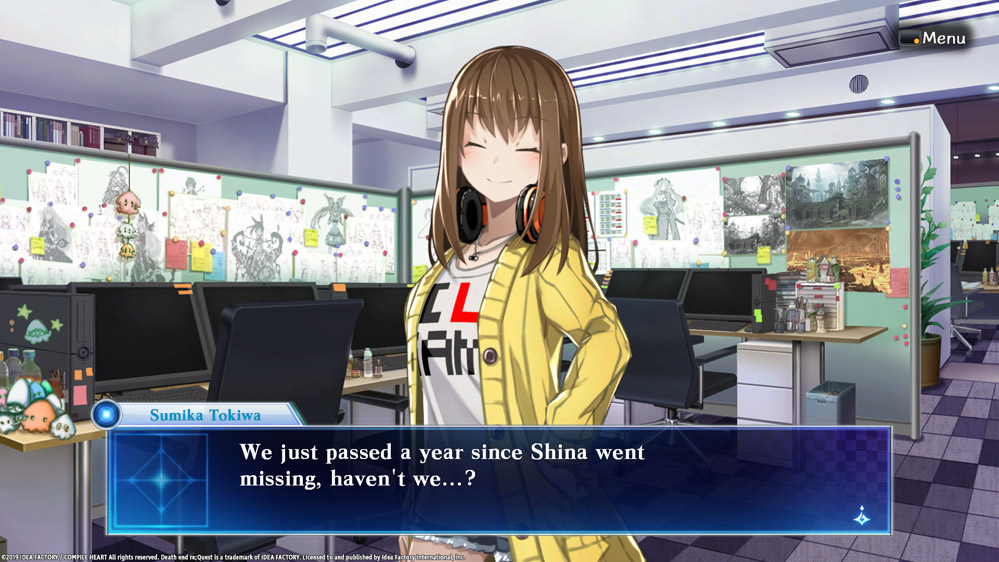
As you learn right off the bat, this isn’t a cutesy game. You will be going through treacherous terrain, experiencing multiple bad endings and squaring off against powerful enemies, so will face horrible choices that can kill off characters in brutal ways. This is where the appeal of the story comes.
The game features multiple endings, and instead of punishing the player for making a bad decision, you can be transferred back to the point of choice to change your decision as long as you have saved the game before. However, it doesn’t tell you to do this, so save often and at every opportunity.
Death End re;Quest won’t show you any gore or unsettling things, leaving it to your imagination with sound effects, voiceovers and text. The game does still hold an ‘M for mature’ rating due to these themes but leaves it to our own messed up imaginations to come up with the visuals.
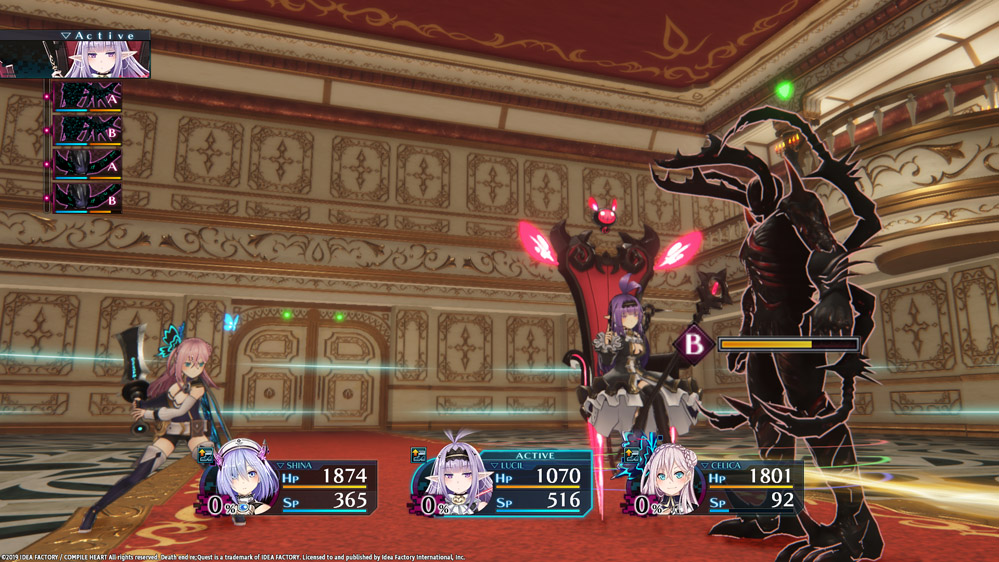
Gameplay
The gameplay of Death End re;Quest has three main aspects. Those are exploration, combat and visual novel text reading, but it’s the combat that stands out as being unique.
During combat, you have four actions: attacking, guard, various skills, or using items such as stat boosters or health recovery. The combat starts with you warping into an enclosed battle arena with enemies and these little nodes on the ground called corruption.
The basic flow of the combat is to move into position near an enemy and choose your actions whilst lining up one enemy with another like a pool shot. You get three actions per turn and if you choose three attacks your character will do a “knockback” that sends the enemy flying in the direction you’re aiming. Depending on the size of the enemy, this knockback could send them ricocheting off the walls in a hilarious version of pinball or, if the enemy is large, move them barely anywhere. The more you can get an enemy to ricochet off a wall or each other the more damage will be inflicted.
If you line your target up with the corruption nodes you will start clearing them from the field, which gives you a corruption level cleared bonus at the end of the battle. The corruption nodes have two functions. If you manage to clear the corruption to under 50% in a battle you can use one of Arata’s skills that have various effects.
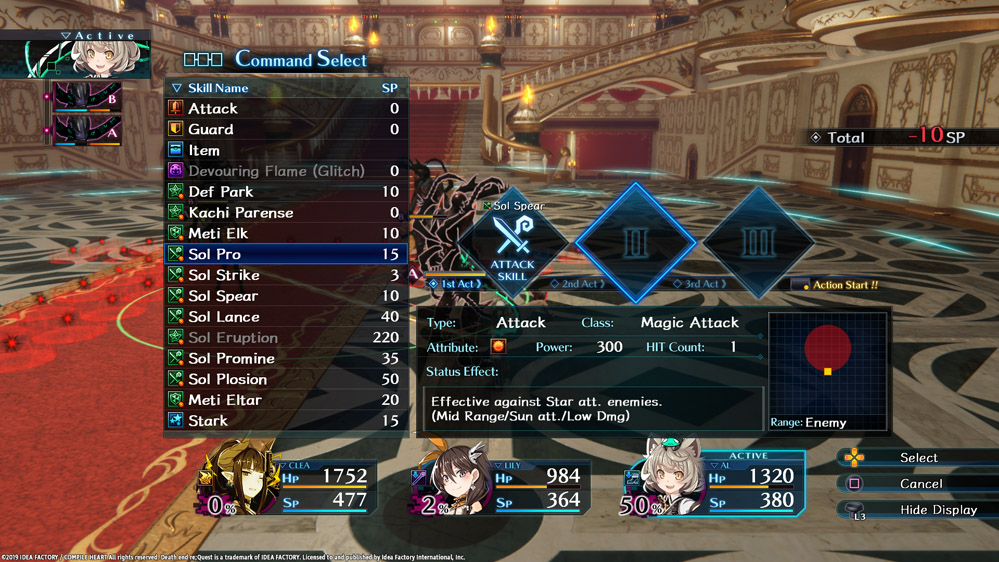
If you clear 80% of the corruption you increase your corruption level. Once there your character can then enter glitch mode. This mode greatly increases the stats of the character along with a nice flashy cut scene. Glitch mode also grants the character use of a glitch skill on their third action choice, which significantly damages the enemy than standard attacks.
Back in “Reality”, the game is presented primarily as a visual novel. These are still very niche and not widely accepted outside Japan. The pros are the very unique story using gore and visual cues to let the player imagine the violence in their own heads and not punishing the player for a “bad” ending. The other great aspect is that the text is easy to read, even for long periods, and with so much of the game dedicated to reading text, even if the game is set to English, it didn’t become too much of a chore as the narrative pulls you along at a good clip.
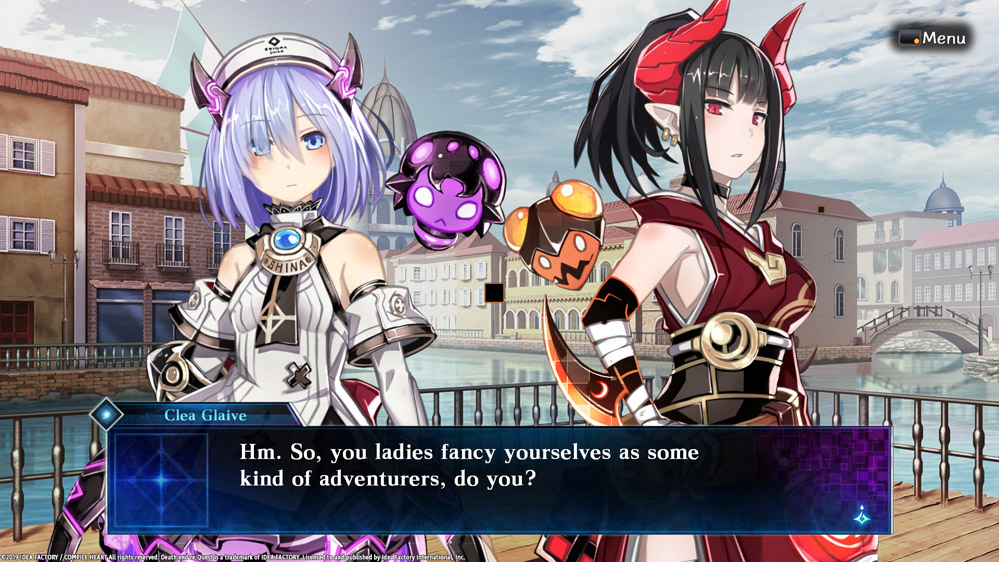
Finally, throughout the game, there are puzzles that you won’t be able to solve initially. Returning to “reality” will give you more lore and paranormal events that ultimately lead to these unbeatable puzzles being fixed, as they are simply bugs wrong with the coding of “World’s Odyssey”.
Graphics
Compared to most JRPG’s, Death End re;Quest takes a cutesy style towards the main protagonists alongside a more sinister design for its enemies. The dungeons, on the other hand, were pale in comparison. Although the glitching effect on the walls and the characters during cutscenes and the lengthy 2D text reading sections were interesting to look at, most rooms/dungeons resembled each other and soon became repetitive.
If you are playing on a PC this game can easily be played at max settings with the simplest rig. The Nintendo Switch version also runs smoothly with no noticeable frame drops or quality issues. The PC version doesn’t go crazy with RTX or anything, but I will admit I found myself enjoying my surroundings and taking in what I saw outside of the dungeons. Overall the graphics are what I’ve come to think of when I see that Compile Heart is making a game, with their distinctive character design and much more fan service than the average developer.
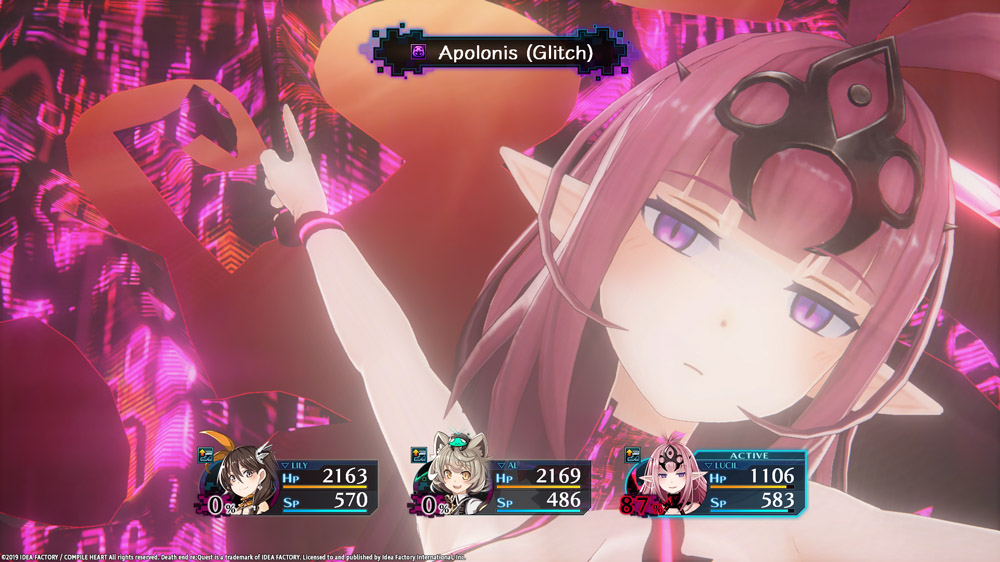
Audio
You have two choices in audio for this game: the fully voiced Japanese audio with English subtitles or voice acted English but with only about 50% audible with the rest in subtitles. To some, this could be jarring as you have to continue reading with only the background music going on during the English audio.
Both are good although the voice acting can be cheesy at times. Characters screaming with over the top dramatic effect came across as comical rather than sounding real. However, between the “Kyahhhhh’s” and “ahhhhh’s”, the voice acting is solid and the music really helps set the mood during cutscenes or important events.
The music was a strong point in the game as I didn’t hear a song I didn’t like or that wasn’t at least somewhat catchy and able to listen to on repeat during battles or exploring. At times it’s very glitchy sounding which fits the aesthetic and theme of the game concept.
During the sombre times of the game, the music really portrays this, and you can generally know you’re in for something given the tone of the music. Combat sound effects were minimal and the only aspect that didn’t fully stand out. The sound of smacking the enemy during combat and bouncing them off the walls of the arena like a pinball machine was probably the highlight.
Summary
Death End re;Quest is a great JRPG befitting of the Compile Heart library of games that is well-made but not perfect. Also, it may not appeal to the wider audience due to the heavy visual novel aspect, and the fan service aspects of the game could be lost on people unaware of the genre.
The character designs are well made, especially with the glitch effect, and very typical of Compile Heart. The fighting mechanics are unique and different to the typical stagnant characters found in turn-based JRPGs. Death End re;Quest gives you more freedom, letting you set up where to go and how you want to play.
With multiple endings and play styles, replayability is encouraged, especially if you enjoyed the story enough to go through it multiple times. However, with very little to look at in dungeons with the repeated assets and wall layouts it may put people off from doing so, which is reflected in our good, but not great, score.

